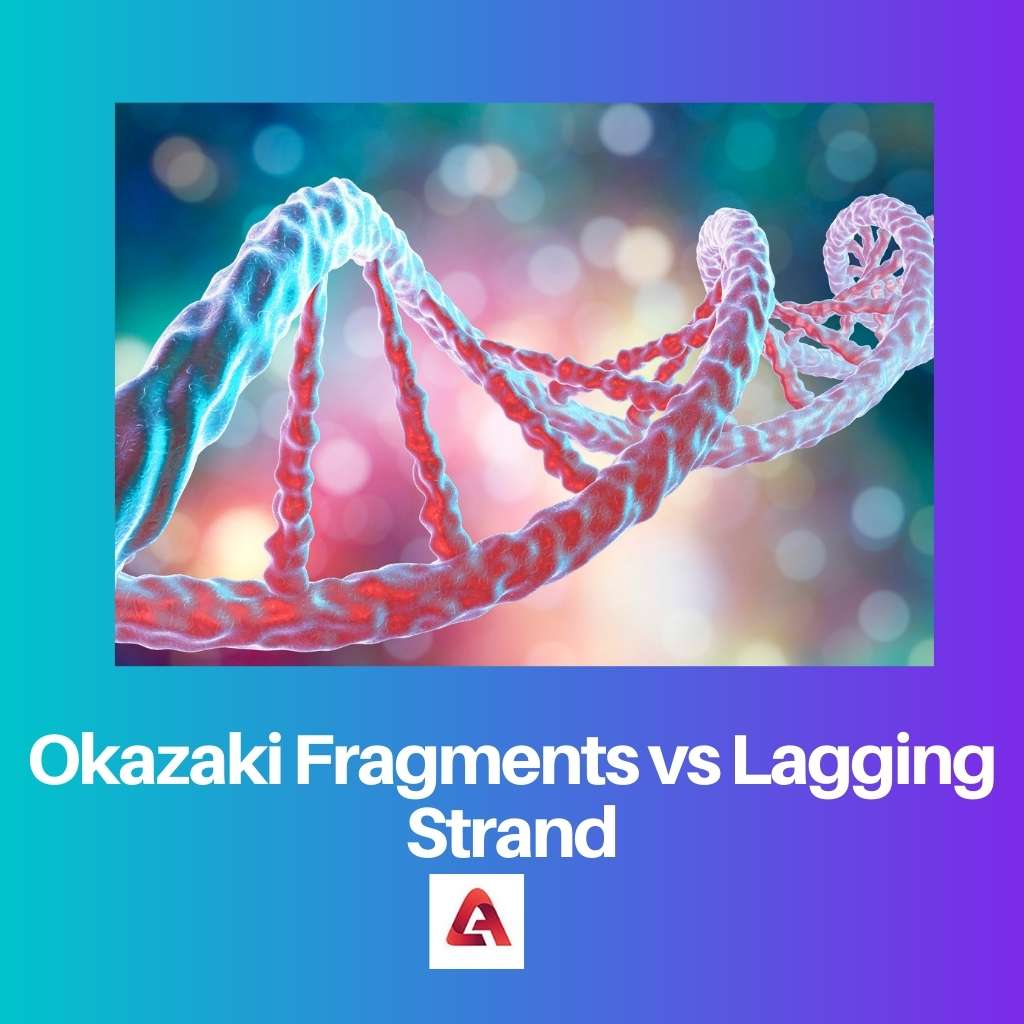Both Okazaki fragments and lagging strands are terms that we come across in chemistry. If you remember your chemistry class lectures, then you would remember hearing these two phrases.
When you go through the DNA replication process, you read about these two. They share a few similarities, but you will also find differences when looking at them in detail.
Key Takeaways
- Okazaki fragments are short, newly synthesized DNA fragments on the lagging strand. The lagging strand is one of two strands of DNA replication synthesized in the opposite direction of the replication fork.
- The lagging strand is discontinuous, and Okazaki fragments are formed during DNA replication, eventually joined by the enzyme DNA ligase to create a continuous strand.
- Okazaki fragments and the lagging strand are important components of DNA replication and play a crucial role in ensuring the accurate duplication of genetic material.
Okazaki Fragments vs Lagging Strand
Okazaki fragments are short segments of newly synthesized DNA formed on the lagging strand during DNA replication. The lagging strand is the strand of DNA that is synthesized in the opposite direction of the replication fork. Okazaki fragments are synthesized on the lagging strand discontinuously.

Okazaki fragments are small portions of DNA, and these appear to be much smaller in size when compared to lagging strands.
The enzyme of DNA duplicates the genetic information, and Okazaki fragments help in the process. If these fragments do not mature adequately, the chromosome formed, later on, will be defective.
The lagging strand is a type of strand that is connected to new DNA. The making of lagging strands is a slow process.
The formation of Okazaki fragments is not possible unless lagging strands perform their duties. These are large in size, and it is the other half of the leading strand which grows without a gap, unlike lagging strands.
Comparison Table
| Parameters of Comparison | Okazaki Fragments | Lagging Strand |
|---|---|---|
| Definition | These are small sections of DNA that are produced by the uninterrupted process of lagging strands. | These are replicated DNA strands. |
| Length | It is comparatively shorter in size. | It is comparatively longer in size. |
| Formation | It is formed by the action undertaken by the strand. | Lagging strands continue formation with the short RNA sequences and maintain the development of Okazaki fragments. |
| Size | These are 100 to 200 nucleotides long. | Its average size is 3000 nucleotides long. |
| Found in | It is a part of the lagging strand. | Lagging strands give space to Okazaki fragments. |
What are Okazaki Fragments?
Okazaki fragments are cycles of DNA nucleotides. These are short, roughly we can measure their average size to be 150 to 200 nucleotides.
These fragments are named after their founder. Japanese biologists Tsuneko Okazaki discovered them in the 1960s with the help of Reiji and other colleagues.
These fragments synthesize later on to be linked by enzyme DNA. Due to this link, they create lagging strands at the time of DNA replication.
DNA that is synthesized recently is known as Okazaki fragments. DNA and RNA primers are needed to be removed from the lagging strand, and this will allow Okazaki fragments to connect.
Even though the process sounds complicated, it is very common. By the time one DNA replication gets complete, the process of Okazaki maturation will happen a million times.
However, this process can not start until RNA primers build segments on the fragments. This formation is like a building block, and this results in the synthesis of DNA.
And the DNA resides in the lagging strand. The process of Okazaki fragments’ maturity can be defective as well.
As a result of this, the strands in the DNA will break, which will induce chromosome abnormalities.
What is Lagging Strand?
The lagging strand is a type of strand that is connected to new DNA. Its synthesis goes in the opposite direction of the growing replication.
The process of DNA replication includes two types of strands. One is the leading strand, and the other is the lagging strand.
When compared to the process of leading strand, the replication of the lagging strand will appear to be more tricky, and as a result, it “lag behind” the further strand. This is the reason behind its name.
The growth of lagging strands takes place when it discontinuously constructs Okazaki Fragments. It is capable of opening up in the 5′ to 3′ direction and grows in the 3′ to 5′ direction.
The formation of lagging strands is a slow process. When lagging strands start to synthesize, they produce Okazaki fragments.
The formation of Okazaki fragments requires a new RNA primer every time. DNA ligase is another requirement in the joining of Okazaki fragments.
Without the work of lagging strands, the process of making Okazaki fragments will get disrupted, and ultimately the proper DNA formation will be compromised.
Main Differences Between Okazaki Fragments and Lagging Strand
- Okazaki Fragments are small sections of DNA that are dependent on lagging strands to be produced, whereas lagging strands are nothing but replicated DNA strands. It is responsible for the continuous growth of Okazaki fragments.
- Okazaki fragments are comparatively shorter in size, but lagging strands, when compared, are much longer in size.
- Okazaki fragments are 100 to 200 nucleotides long, but the average size of lagging strands is 3000 nucleotides long.
- Okazaki fragments are formed by the action undertaken by the strand. While lagging strands continue formation with the short RNA sequences and maintain the development of Okazaki fragments.
- Okazaki fragments are a part of the lagging strand, and lagging strands give space to Okazaki fragments which is responsible for the continuous growth of Okazaki fragments.
